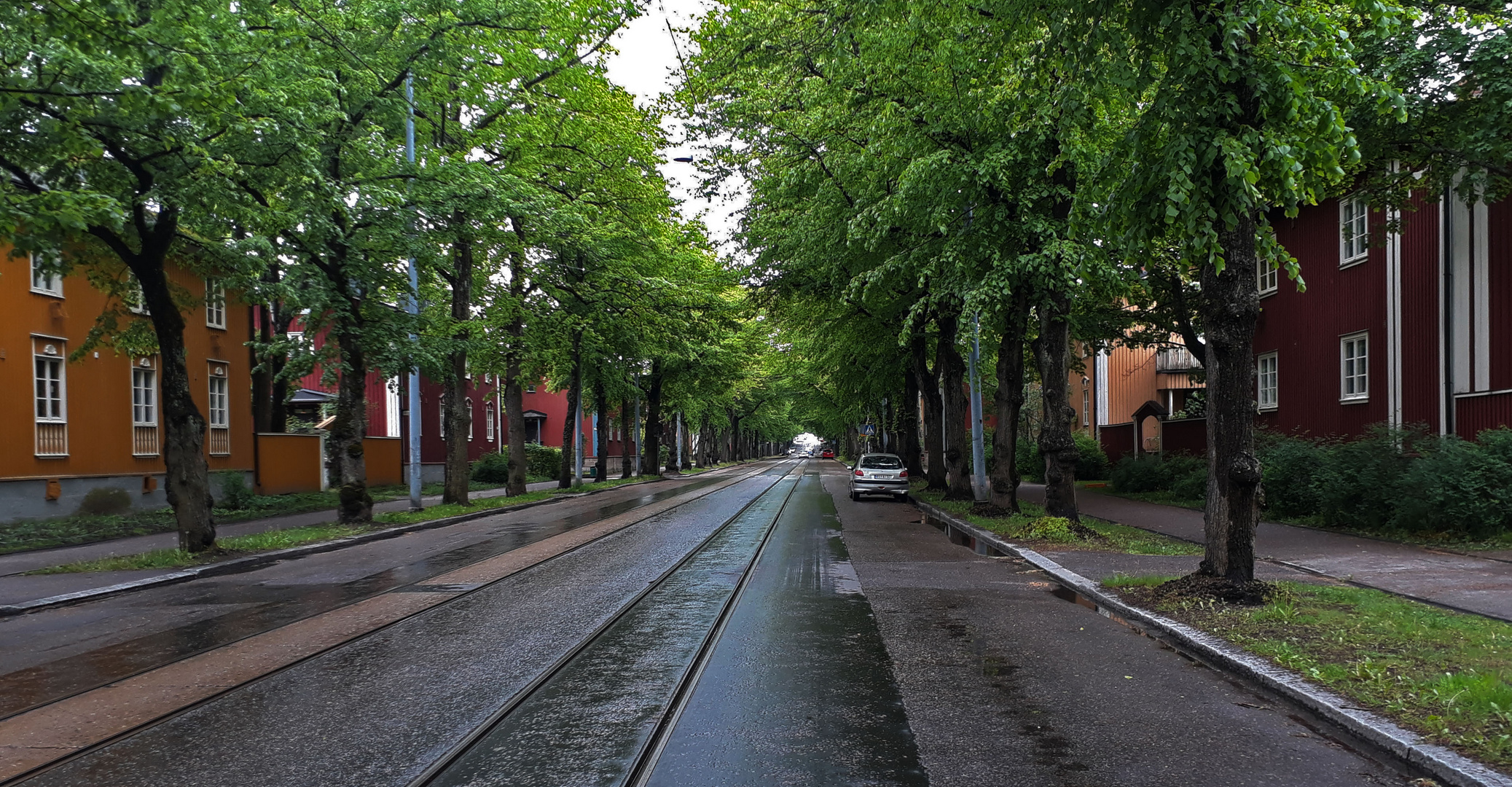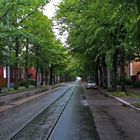Helsinki, Käpylä, Pohjolankatu
Puu-Käpylä [‘wood Käpylä’] (Swedish ‘Trä-Kottby’) is well known as the earliest example in Finland of the Garden City Movement. The suburb of wooden buildings, designed by Martti Välikangas, was built between 1920 to 1925 and designed in the so-called Nordic Classicism style prevalent throughout the Nordic countries at the time. Puu-Käpylä was a model workers’ housing area, built at a time when there was a bad housing problem for workers in the city. The construction follows the typical Finnish vernacular method: square-log construction then faced in weatherboarding. However, the whole process was partly industrialized, and the area is regarded as the first prefabricated housing area in Finland. The mostly 2-storey semi-detached timber houses are arranged around sheltered courtyards, where originally the tenants’ vegetable gardens were sited. The colours vary slightly from one house to another, but with a dominance of traditional red ochre. The area is still mostly occupied by working-class families though it has also been a popular residential area for professional types, especially architects – and it also has become a favourite tourist attraction.
Välikangas, together with architect Hilding Ekelund, also participated in the design of the Olympic Village situated in Käpylä.
Käpylä was incorporated into the city of Helsinki in 1906.






















Fred Riedel 07/11/2020 20:48
Very realistic scene, realistic moodLG Fred
Peter Loleit 07/06/2020 10:39
Schöne Streetaufnahme mit guter Bildtiefe!LG Peter
homwico 07/06/2020 0:36
Schön aus dieser Perspektive.LG homwico
Adele D. Oliver 06/06/2020 23:12
a great view down this urban street, great perspectiveand depth, nice diagonals !!!
happy weekend,
Adele
Hellmut Hubmann 06/06/2020 21:24
Nur beim genauen Hinsehen erkenne ich die Oberleitung. Schöner Blick mit einem Hauch Regen.Vitória Castelo Santos 06/06/2020 20:51
Eine gute Perspektive, sehr gut fotografiert.LG Vitoria